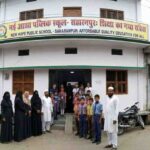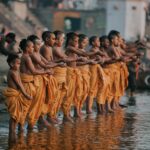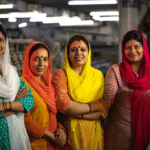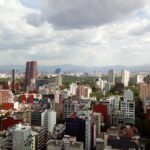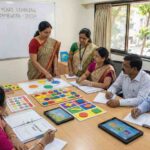New Delhi – India, a land celebrated for its diversity, often prides itself on the ethos of Vasudhaiva Kutumbakam—the world is one family. But beneath the lofty proclamations of unity and tolerance lies an uncomfortable reality: the growing chasm between what we preach and what we practice.
From public figures calling for coexistence while fuelling sectarian divides to the everyday intolerance observed in social interactions, India seems trapped in a paradox. Are we truly a nation that embraces diversity, or are we merely paying lip service to the ideal while reinforcing walls of exclusion?
Preaching Tolerance, Practicing Intolerance: A Stark Contrast
The gap between rhetoric and reality is glaring. Calls for harmony are often drowned out by actions that reveal a lack of genuine commitment to inclusivity.
- Politicians’ Double Speak
- In one breath, political leaders advocate for communal harmony; in the next, they stoke divisions. During an election rally in 2023, a prominent leader declared, “This land belongs to one religion,” igniting nationwide protests. Such statements not only undermine India’s secular fabric but also expose the hollowness of their calls for unity.
- Similarly, opposition leaders accusing ruling parties of intolerance have themselves faced allegations of divisive rhetoric, highlighting a bipartisan issue.
- Selective Outrage
- Intolerance isn’t limited to politicians. Public debates often reveal double standards. For instance, while there is widespread condemnation of hate crimes against minorities, similar incidents against other groups frequently receive less attention, perpetuating a cycle of selective empathy.
Everyday Intolerance: From Subtle to Blatant
The contradiction extends beyond public figures to everyday interactions:
- Housing Discrimination
- A 2023 survey by the Housing and Land Rights Network found that 65% of urban Indians experienced or witnessed housing discrimination based on religion, caste, or marital status. Despite legal protections, landlords frequently deny homes to single women, interfaith couples, and those from minority communities.
- Workplace Bias
- Corporate India often touts diversity policies, but ground realities tell a different story. A 2022 report by Oxfam India revealed that Dalits and Muslims remain grossly underrepresented in leadership roles, with unconscious biases deeply entrenched in hiring practices.
- Online Harassment
- Social media platforms, often hailed as spaces for free expression, have become breeding grounds for intolerance. From communal trolling to doxxing individuals over differing opinions, the digital world mirrors the real-world biases, amplifying them in more harmful ways.
The Role of Religion in Fostering Contradictions
Religious institutions and leaders, who could be powerful forces for unity, often fall into the trap of exclusivism.
- Symbolism Over Substance
- Temples, mosques, and churches frequently advocate for tolerance but remain deeply segregated along caste, class, and gender lines. While sermons preach love and acceptance, the lived experience within many religious spaces tells a different story.
- Festivals of Joy, Grounds of Conflict
- Festivals like Holi, Eid, and Christmas, meant to foster communal harmony, sometimes become flashpoints for tension. The growing trend of “cultural policing”—where celebrations are scrutinized for being “too Western” or “anti-national”—shows how intolerance often hides behind the guise of protecting tradition.
Media and the Echo Chamber of Intolerance
The media, which should ideally hold a mirror to society, often exacerbates the problem.
- Polarizing Narratives
- Sensationalism drives news cycles, with coverage that amplifies divisive voices while sidelining stories of unity. This not only distorts reality but reinforces societal biases.
- The Social Media Spiral
- Platforms like Twitter and Facebook, designed to connect people, increasingly serve as echo chambers. Algorithms prioritize conflict over conversation, pushing users toward extremist viewpoints and deepening societal divides.
Can We Bridge the Gap Between Preaching and Practice?
To address this hypocrisy, both systemic and cultural changes are essential:
- Educational Reform
- Introducing inclusive curriculums that emphasize critical thinking, empathy, and the dangers of bias can cultivate a generation more committed to practicing tolerance.
- Accountability for Leaders
- Politicians and public figures must be held accountable for their rhetoric, with stricter consequences for hate speech and divisive actions.
- Grassroots Movements
- Community-led initiatives promoting interfaith and intercultural dialogues can dismantle stereotypes and foster mutual understanding.
- Media Responsibility
- Journalistic ethics must prioritize balanced reporting and highlight stories of coexistence to counteract sensationalism.
Conclusion: A Call to Action
India’s diversity is its strength, but it is also its test. While the rhetoric of tolerance echoes loudly, the practice often falls silent.
The challenge lies in bridging this gap—turning lofty ideals into tangible actions. True tolerance demands more than words; it requires courage, accountability, and a willingness to confront our own biases. The question remains: Will we rise to the challenge, or will we remain trapped in the hypocrisy of our own contradictions?
